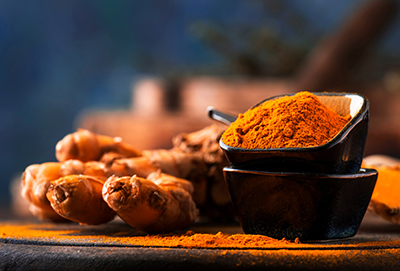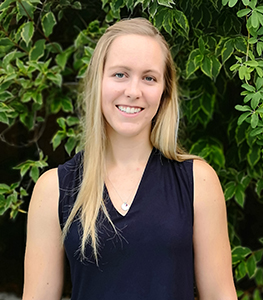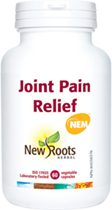Combatting Winter Aches, Pains, and Injuries
As the temperature outside starts to drop, the chances of snow, ice, and slippery conditions increase dramatically. Unfortunately, with these imminent winter conditions comes the increased risk of slips and falls, which cause aches, pains, and joint injuries. The good news is that these injuries can be prevented, and there are natural therapies that can aid in healing and decreasing joint pain!
The famous quote by Benjamin Franklin: “An ounce of prevention is worth a pound of cure” is more applicable than ever right now. Preventing pain and injuries in the first place saves us all a lot of pain and rehabilitation time. The easiest way to protect yourself from injury as you get back into physical activity is to ease-in slowly. Don’t expect to be where you were two years ago, so give your muscles and joints a chance to slowly adapt to being active again with a good warmup and plenty of stretching.
Of course, we cannot prevent every injury from happening, and this is where natural therapies that will support our bodies’ own healing process come in handy.
Diet and Lifestyle
Usually, ice is the first thing that we reach for when our joints flare up or we injure ourselves. While ice can be a great tool for reducing pain after an injury,[1] other important lifestyle factors are often overlooked. One of the first aspects I discuss with patients is their protein intake, because insufficient intake can result in slower wound healing and longer recovery time for working muscles.[2] It is important to maintain healthy muscles because they help to keep our joints in line to prevent joint damage or further breakdown in osteoarthritis.[3] The recommended daily allowance (RDA) for protein is set at 0.8 g/kg/d, which means you should eat 0.8 grams of protein for every kilogram of your body weight.[4] Often, athletes or those healing from injury will need to increase how much protein they are consuming, but this is best discussed with a trusted health-care practitioner.[5] Enjoying plenty of fruits and vegetables is also an important dietary consideration for joint pain and injury, as these foods are filled with vitamins, minerals, and antioxidants. Vitamin C has been shown to prevent the progression of osteoarthritis through its antioxidant action.[6]
Research also supports the use of some natural herbs and supplements such as curcumin, Boswellia, bromelain, collagen, and natural eggshell membrane for healing arthritis and joint injuries. Most of these substances focus on decreasing inflammation, which makes them useful for acute or chronic joint injuries.
 Curcumin
Curcumin
Curcumin is an active component of the spice turmeric and has a characteristic yellow colour.[7] It is known for its anti-inflammatory properties, but also appears to possess antioxidant and anticatabolic (reduces the breakdown of muscle tissue) properties.[8] This means that not only curcumin helps control inflammation and therefore pain, but it can also protect against muscle breakdown during injury recovery. Curcumin is not readily absorbed in the human body, so it is often combined with substances such as piperine—from black pepper—which has been shown to enhance the reduction of pain by improving curcumin absorption.[9]
Boswellia
The resin of Boswellia serrata—or Indian frankincense by its common name—has been traditionally used for centuries to help treat many chronic diseases.[10] One study found that Boswellia extract was very effective for reducing pain and improving function of the knee joint in as little as seven days.[11] Another study found similar outcomes in other joints, but the improvements became noticeable after four weeks.[12] Boswellia can be a great herbal addition to both acute injuries and to prevent long-term osteoarthritis flares, like the ones experienced after abruptly returning to exercise.
Bromelain
Bromelain is another plant-derived powerhouse enzyme; it comes from the stems of pineapples. Many studies have looked into the effectiveness of bromelain for joint health and injury. Of note, it has been shown that bromelain can reduce both pain and stiffness in people suffering from osteoarthritis, but also in those who are otherwise healthy but suffering from knee pain or acute injury.[13], [14] Aside from anti-inflammatory and analgesic (pain-relieving) properties, bromelain was also shown to be anti-oedematous, which means that it can help to relieve that pesky swelling that comes with injuries.[15]
Collagen
We know that collagen is broken down in joints with osteoarthritis, but there is evidence that collagen is degraded in our joints immediately after an injury and that this breakdown could continue in the long term.[16] Collagen is essential for healthy joints, and studies now show that taking collagen orally results in less pain in those with osteoarthritis or those who are experiencing joint pain due to exercise.[17], [18]
Natural Eggshell Membrane
Natural eggshell membrane (NEM) has been shown in multiple studies to produce long-lasting pain relief and improved quality of life, especially in those experiencing an osteoarthritis flare.[19], [20] Results were seen in as little as seven days, with the maximum pain relief being experienced at three weeks.[21] It also appears that the effects of NEM can last for up to 90 days, which is just enough time for a sedentary body to get back into physical activity.[22]
Conclusion
Adding natural supplements while also ensuring a well-rounded, healthy diet and proper hydration can help relieve acute joint injury, ease an osteoarthritis flare, and even prevent you from feeling joint pain in the first place as you get back into the gym or your sport of choice.
 Dr. Kaitlyn Richardson, ND, HbSc
Dr. Kaitlyn Richardson, ND, HbSc
A naturopathic doctor in Milton, Ontario, with a clinical focus in sports and performance medicine. She believes in using individualized, holistic, and evidence-based strategies to help active individuals feel and perform their best.
drkaitlynrichardson.com
[1] van den Bekerom, M.P.J., P.A.A. Struijs, L. Blankevoort, L. Welling, C. Niek van Dijk, and G.M.M.J. Kerkhoffs. “What is the evidence for rest, ice, compression, and elevation therapy in the treatment of ankle sprains in adults?” Journal of Athletic Training, Vol. 47, No. 4 (2012): 435–443.
[2] Tipton, K.D. “Nutritional support for exercise-induced injuries.” Sports Medicine, Vol. 45, No. S1 (2015): S93–S104.
[3] Shorter, E., A.J. Sannicandro, B. Poulet, and K. Goljanek-Whysall. “Skeletal muscle wasting and its relationship with osteoarthritis: A mini-review of mechanisms and current interventions.” Current Rheumatology Reports, Vol. 21, No. 8 (2019): 40.
[4] Millward, D.J. “Identifying recommended dietary allowances for protein and amino acids: A critique of the 2007 WHO/FAO/UNU report.” British Journal of Nutrition, Vol. 108, No. S2 (2012): S3–S21.
[5] Jäger, R., C.M. Kerksick, B.I. Campbell, P.J. Cribb, S.D. Wells, T.M. Skwiat, M. Purpura, et al. “International Society of Sports Nutrition Position stand: Protein and exercise.” Journal of the International Society of Sports Nutrition, Vol. 14 (2017): 20.
[6] Li, H., C. Zeng, J. Wei, T. Yang, S.-G. Gao, Y.-S. Li, and G.-H. Lei. “Associations between dietary antioxidants intake and radiographic knee osteoarthritis.” Clinical Rheumatology, Vol. 35, No. 6 (2016): 1585–1592.
[7] Jurenka, J.S. “Anti-inflammatory properties of curcumin, a major constituent of Curcuma longa: A review of preclinical and clinical research.” Alternative Medicine Review, Vol. 14, No. 2 (2009): 141–153.
[8] Henrotin, Y., A.L. Clutterbuck, D. Allaway, E.M. Lodwig, P. Harris, M. Mathy-Hartert, M. Shakibaei, and A. Mobasheri. “Biological actions of curcumin on articular chondrocytes.” Osteoarthritis and Cartilage, Vol. 18, Vol. 2 (2010): 141–149.
[9] Sahebkar, A., and Y. Henrotin. “Analgesic efficacy and safety of curcuminoids in clinical practice: A systematic review and meta-analysis of randomized controlled trials.” Pain Medicine, Vol. 17, No. 6 (2016): 1192–1202.
[10] Siddiqui, M.Z. “Boswellia serrata, a potential antiinflammatory agent: An overview.” Indian Journal of Pharmaceutical Sciences, Vol. 73, No. 3 (2011): 255–261.
[11] Siddiqui. “Boswellia serrata.”
[12] Yu, G., W. Xiang, T. Zhang, L. Zeng, K. Yang, and J. Li. “Effectiveness of boswellia and boswellia extract for osteoarthritis patients: A systematic review and meta-analysis.” BMC Complementary Medicine and Therapies, Vol. 20, No. 1 (2020): 225.
[13] Walker, A.F., R. Bundy, S.M. Hicks, and R.W. Middleton. “Bromelain reduces mild acute knee pain and improves well-being in a dose-dependent fashion in an open study of otherwise healthy adults.” Phytomedicine, Vol. 9, No. 8 (2002): 681–686.
[14] Brien, S., G. Lewith, A. Walker, S.M. Hicks, and D. Middleton. “Bromelain as a treatment for osteoarthritis: A review of clinical studies.” Evidence-based Complementary and Alternative Medicine, Vol. 1, No. 3 (2004): 251–257.
[15] Maurer, H.R. “Bromelain: Biochemistry, pharmacology and medical use.” Cellular and Molecular Life Sciences, Vol. 58, No. 9 (2001): 1234–1245.
[16] Kumahashi, N., P. Swärd, S. Larsson, L.S. Lohmander, R. Frobell, and A. Struglics. “Type II collagen C2C epitope in human synovial fluid and serum after knee injury—Associations with molecular and structural markers of injury.” Osteoarthritis and Cartilage, Vol. 23, No. 9 (2015): 1506–1512.
[17] Bello, A.E., and S. Oesser. “Collagen hydrolysate for the treatment of osteoarthritis and other joint disorders: A review of the literature.” Current Medical Research and Opinion, Vol. 22, No. 11 (2006): 2221–2232.
[18] Clark, K.L., W. Sebastianelli, K.R. Flechsenhar, D.F. Aukermann, F. Meza, R.L. Millard, J.R. Deitch, P.S. Sherbondy, and A. Albert. “24-Week study on the use of collagen hydrolysate as a dietary supplement in athletes with activity-related joint pain.” Current Medical Research and Opinion, Vol. 24, No. 5 (2008): 1485–1496.
[19] Kiers, J.L., and J.H.F. Bult. “Mildly processed natural eggshell membrane alleviates joint pain associated with osteoarthritis of the knee: A randomized double-blind placebo-controlled study.” Journal of Medicinal Food, Vol. 24, No. 3 (2021): 292–298.
[20] Eskiyurt, N., M. Saridoğan, K. Senel, R. Günaydin, A. Erdal, E. Özyiğit, Ü. Akarırmak, et al. “Efficacy and safety of Natural Eggshell Membrane (NEM®) in patients with grade 2/3 knee osteoarthritis: A multi-center, randomized, double-blind, placebo-controlled, single-crossover clinical study.” Journal of Arthritis, Vol. 8, No. 4 (2019): 285.
[21] Kiers and Bult. “Mildly processed natural eggshell membrane.”
[22] Eskiyurt et al. “Efficacy and safety of Natural Eggshell Membrane.”

 Stores
Stores
